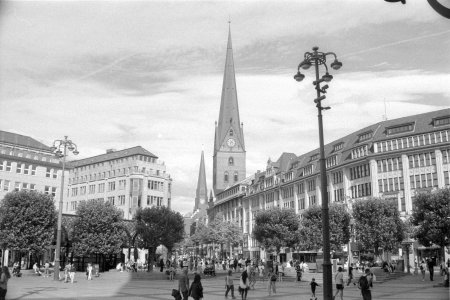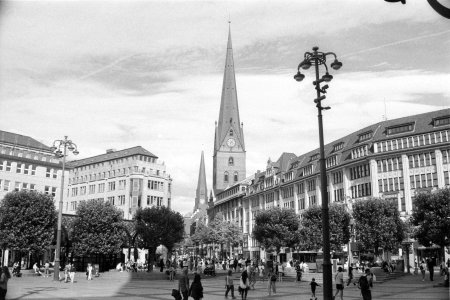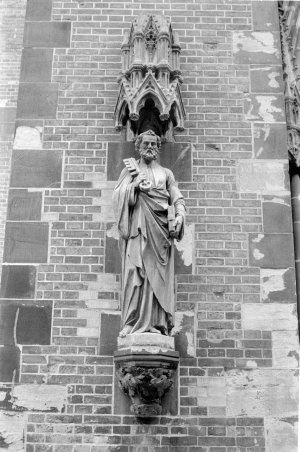Bill Watts
Well-Known Member
I normally stick to Ilford FP4+, Delta 100 or Acros, however on this occasion I used HP5 in an Olympus iS-3000 which I know exposes correctly and generally give excellent results.
I processed the film in Ilfotec DD-X at the time specified for the water temperature and exposure rating (ISO 400). The Scanner and Software, Minolta Dimage Scan Dual IV and VueScan 9 Pro have always performed well in the past.I have made no change to how I operated the scanner or software. Scanned in 24bit colour and inverted in VueScan.
The results are not as contrasty as I expect, although the negatives themselves look of good density, the skies in particular seem irregular and crystalised.
I would like to ask the collective mind if this is normal for HP5 or have I overdeveloped?

I processed the film in Ilfotec DD-X at the time specified for the water temperature and exposure rating (ISO 400). The Scanner and Software, Minolta Dimage Scan Dual IV and VueScan 9 Pro have always performed well in the past.I have made no change to how I operated the scanner or software. Scanned in 24bit colour and inverted in VueScan.
The results are not as contrasty as I expect, although the negatives themselves look of good density, the skies in particular seem irregular and crystalised.
I would like to ask the collective mind if this is normal for HP5 or have I overdeveloped?



